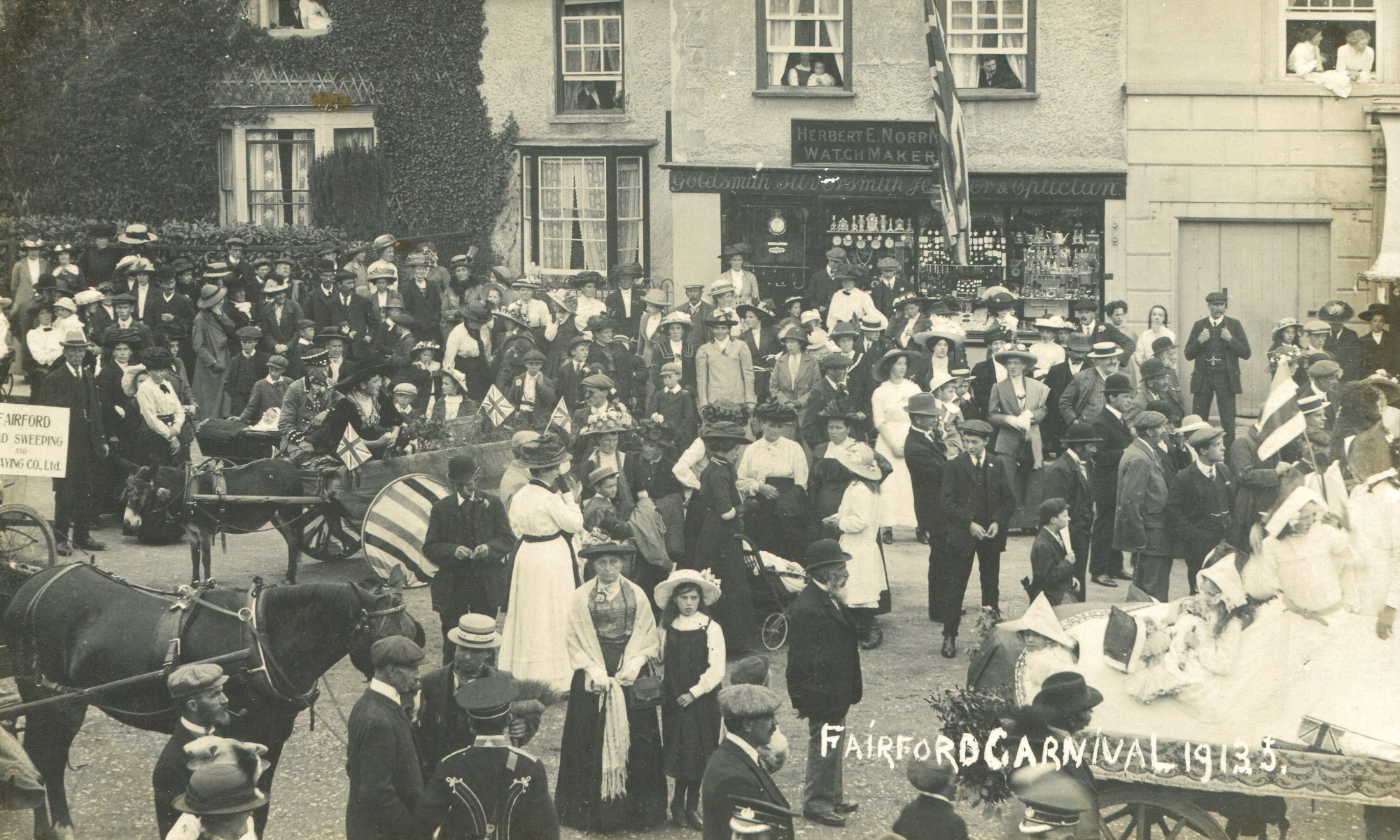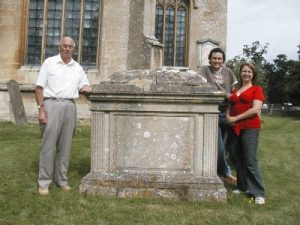Richard Bignell died 1817
Ebenezer Pococke 1807-1864
Ebenezer Pococke was one of the private patients in The Retreat asylum in Fairford. The asylum was founded in 1822 by Alexander Iles in his house at the corner of Milton Street and Horcott Road. It was one of the few privately-owned asylums in Gloucestershire and during the 19th Century it built up a good reputation for the standard of care of its patients. Between 1822 and 1944, when it closed, The Retreat treated about 1,500 patients, some of whom ended their days there.
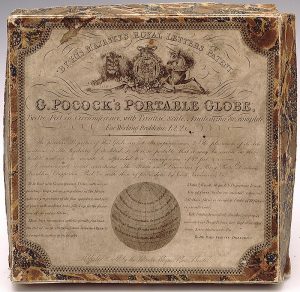
Ebenezer was born in Hungerford in 1807, one of the 14 children of George and Elizabeth Pococke. George was a Methodist preacher and master of a private academy in Bristol. George was also something of an inventor and experimented with large kites for pulling coaches and for carrying people. Assisted by Ebenezer, George Pococke also invented an inflatable globe made up of pieces of paper upon which sections of maps were printed. This invention had some commercial success and a few examples have survived in museums. In 1833 Ebenezer married Sarah Eliza Holder in Bristol and later the couple had two daughters. In the same year Ebenezer had a book published titled ‘Flowers of the East’, a study of Indian poetry and music. This presumably indicates that Ebenezer must have spent some time in the Indian subcontinent prior to 1833. Ebenezer entered Magdalen Hall in Oxford on 5 July 1838 where he would have received a classical education, but may not have obtained his degree.
Ebenezer followed his father’s profession and by 1841 was the master of a private school at Bitton which had 17 pupils. Ten years later he was living in Sunbury, Middlesex teaching just four female pupils and by 1861 his career had declined even further as he was boarding in a house in Winterbourne as a tutor possibly to the occupant’s children. At this date Ebenezer’s wife Sarah was living with her sister and brother-in-law in Sydenham, Kent and had possibly separated from her husband.
Ebenezer’s mental health had probably been poor for some time before he was admitted to The Retreat on 19 Dec 1863. The Retreat, like all private asylums, had a Board of Visitors who regularly inspected the establishment to ensure it was being managed in accordance with the legal and medical requirements. An entry in the Visitors’ Book dated 5 March 1864 noted that Ebenezer was suffering from ‘nervous weakness’.
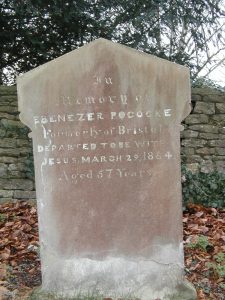
After just over three months as a patient Ebenezer Pococke died in The Retreat on 29 March 1864 at the age of 57. He was buried in St Mary’s churchyard directly opposite the grave of Alexander Iles, the founder of the institution where Ebenezer had spent his last days. He is one of the very few patients of The Retreat to have a headstone erected over his grave, presumably paid for either by his wife or his surviving siblings.
As an interesting footnote to the life of Ebenezer Pococke, his sister Martha married Dr Henry Mills Grace of Mangotsfield and in 1848 gave birth to a son, William Gilbert, universally known as ‘W G Grace’ one of England’s most celebrated cricketers.
John Keble 1792-1866
John Keble? Who was he? If you like looking at the details in hymn books, you may have noticed his name quite often:
• When God of Old came down from heaven… (A & M revised 154)
• New every morning is the love… (A & M revised 4)
• Sun of my soul, then Saviour dear… (A & M revised 24)
• Blest are the pure in heart… (A & M, revised 335), and others.
The English Hymnal contains many more: numbers 33, 140, 158, 244, 260, 274, 348, 370, and 497.
If you know Oxford, you may know Keble College, his memorial. But who was he? What did he do?
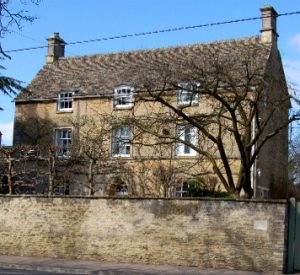 John Keble’s house in Fairford which was called Court Close at the time and in which John Keble senior lived all of his married life.
John Keble’s house in Fairford which was called Court Close at the time and in which John Keble senior lived all of his married life.
He was born on St Mark’s Day, 25th April 1792 at the family home in Fairford (now Keble House), the son of another John Keble who was Vicar of Coln St Aldwyns. He was taught at home by his father until in 1806 when he won a scholarship to his father’s old Oxford college, Corpus Christi. In 1810 he took a double first in classics and mathematics: very few had ever managed this before (Sir Robert Peel being one of them) and Keble at just 18 was probably the youngest ever. In 1811 he was elected a Fellow of Oriel College where the Senior Common Room at that time had a reputation for its outstanding intellectual abilities. He was ordained Deacon in 1815 and Priest the following year and was appointed curate of Eastleach Martin and Eastleach Turville. In the university vacations he lived at Fairford and served his parishes from there: in term time, he and his brother Thomas took it in turns to go out to the parishes from Oxford on Sundays, and their father looked after things during the week. He was a College tutor from 1817 until 1823 when his mother died. He took on Southrop as well as the Eastleaches and lived there taking in pupils.
In 1825 he went to be curate of Hursley near Winchester but next year he returned home. His favourite sister Mary Anne had died and Keble served as curate to his elderly father until he died at the beginning of 1835.
In October 1835 he married; and at the end of the year he returned to Hursley as vicar and remained there until his death on 29th March 1866.
Why is Keble important? His hymns have already been mentioned. He was not actually a hymn writer but a poet and compilers of hymn books have generally selected verses from his longer poems. The best known collection is ‘The Christian Year’ first published in 1827. It contains poems for each Sunday of the year and the other Holy Days. Over 100,000 copies were sold in the first 25 years, many more after his death and it is still in print.
Lyra Innocentium followed in 1846; published to pay for the restoration of Hursley Church. It was the National Apostasy Sermon which Keble preached in 1833 in St Mary’s Oxford that John Henry Newman took as marking the beginning of the Oxford Movement. The Movement’s leaders (mainly Keble, Henry Newman took as marking the beginning of the Oxford Movement. The Movement’s leaders (mainly Keble, Newman and Pusey) are also called Tractarians because of Tracts for the Times that they published.
Many think the Oxford Movement was to do with ‘High Church’ and ‘ritualism’. It was not. It was the revival of theology, a re-discovery of our roots in the teachings of the ancient Church fathers (many of whose writings were translated by the Tractarians). It was a revival of discipline and holiness. They were men of great piety and earnestness which makes them seem humourless, which contemporaries tell us they certainly were not.
by John Hunt February 2004
Further reading:
Dictionary of National Biography
John Keble: a study in limitations by G Battiscombe. London: Constable,1963
A glimpse of heaven: the Kebles of Fairford by Hugh Greenhalf. Anglo Catholic History Society, 2005
A Moment in Time: John and Thomas Keble and their Cotswold Life by Allan Ledger, 2017
William Child Iles 1836-1923
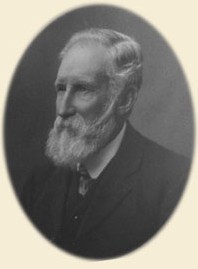 One of the many Englishmen who went to New Zealand to seek fame and fortune in the 19th Century was William Child Iles. William was the son of Nicholas and Charlotte Iles of Fairford. Nicholas Roch Iles was an auctioneer and an agent for the Globe Insurance Company in Fairford. According to Pigot’s 1842 Gloucestershire trade directory Nicholas was also an agent for Mander & Power’s Dublin stout. William was born in Fairford on 26 April 1836 but was not baptised in St Mary’s Church until 21 January 1840. William joined the Army where he became a dispatch rider for Lord Cardigan during the Crimean War. He sailed on 5 October 1859 on the four-month voyage to New Zealand in the ‘Bosworth’. In New Zeland he had a number of jobs including a coach and wagon driver in Invercargill, a farmer, a clerk, and a warder in Dunedin Public Hospital, and a warder in a mental hospital in Otago. Perhaps William had been attracted to this last post because of his family connections with Alexander Iles’s asylum in Fairford. Not all of William’s many occupations were successful as he filed for bankruptcy in 1882 when he was a labourer living in the borough of St Kilda in Dunedin where he also served as Returning Officer for Park Ward of that borough.
One of the many Englishmen who went to New Zealand to seek fame and fortune in the 19th Century was William Child Iles. William was the son of Nicholas and Charlotte Iles of Fairford. Nicholas Roch Iles was an auctioneer and an agent for the Globe Insurance Company in Fairford. According to Pigot’s 1842 Gloucestershire trade directory Nicholas was also an agent for Mander & Power’s Dublin stout. William was born in Fairford on 26 April 1836 but was not baptised in St Mary’s Church until 21 January 1840. William joined the Army where he became a dispatch rider for Lord Cardigan during the Crimean War. He sailed on 5 October 1859 on the four-month voyage to New Zealand in the ‘Bosworth’. In New Zeland he had a number of jobs including a coach and wagon driver in Invercargill, a farmer, a clerk, and a warder in Dunedin Public Hospital, and a warder in a mental hospital in Otago. Perhaps William had been attracted to this last post because of his family connections with Alexander Iles’s asylum in Fairford. Not all of William’s many occupations were successful as he filed for bankruptcy in 1882 when he was a labourer living in the borough of St Kilda in Dunedin where he also served as Returning Officer for Park Ward of that borough.
William married twice, his first wife Mary Ellen Garthwaite died aged 18 on 4 August 1869 after having been married for just one year. She died of complications the day after giving birth to a daughter. On 11 April 1873 William married Margaret McArthur who had 10 children over the next 20 years. William was a founder member and secretary of the Dunedin branch of the Salvation Army. Margaret died on 4 January 1903 and William died on 15 June 1923. The couple are buried in an unmarked grave in Dunedin’s Northern Cemetery.
June Lewis-Jones 1935-2015
It is with very great sadness that we report the death in August of the President of Fairford History Society, June Lewis-Jones. June was always so supportive of FHS, ready to lend a hand with information and advice.
She worked at Farmor’s School for over 37 years and taught many people in the town to type. She was passionate about the countryside and in her younger days she was a Cotswold Way warden and wrote a book on the Cotswold Way. She also had a great love for the Cotswold Lion breed of sheep, one of whom attended her wedding to Ralph in 1998.
She was so involved with many things in the town, an inveterate raiser of funds for Fairford Hospital and for the Church. The proceeds of her latest publication and first children’s book are for the preservation of the beautiful Church windows.
She wrote 29 books and wrote for Cotswold Life since it started about 1960 and also contributed to the Gloucestershire Echo and Wilts and Glos Standard regularly.
Our condolences go to Ralph, her husband and his family.
Poole Family Visit Ancestors’ Graves
Tuesday August 22nd 2006
The Poole family from Gloucester are able to trace their family back to the 15th Century. On 22nd August they made a special visit to Fairford to try to trace some of their ancestors. During their visit Fairford History Society assisted the Poole family to find the tomb of their ancestors Henry and Susanna Tovey who died in 1801 and 1806 and whose listed tomb is in St Mary’s Churchyard (see opposite). At least 11 other members of the Tovey family are also buried in St Marys and all of their graves were identified during the visit. The later Toveys were millers and maltsters at Fairford Mill.
